Cash for Silver Morgan Dollars Near Boston, MA
Most people have silver or gold coins sitting around the house, in a jewelry box, on a closet shelf, in a safety deposit box, or even in a 5-gallon water container that turned into the family vacation fund. If you are in search of top coin buyers near you, we can assist you at The Jewelers & Loan Co. of Quincy, Massachusetts, with the coins you may have in your possession.I remember when my grandmother used to collect cans and rinse them out with water before she exchanged them for a nickel each and sorted her nickels to find the silver ones. I was young and and didn’t quite understand at the time, but she knew what she was looking for. Coins can be fun and interesting!
We’d like to offer some simple tips when it comes to collecting coins. Firstly, do NOT clean the coins. If you cannot see the date on the coin, that doesn’t necessarily mean it’s a valuable coin. Just because a coin is old, meaning pre-1900’s, does not always mean it is rare and valuable. Some may think that if the coin is in great condition, it must be worth a lot of money! Well, coins have over seventy different grading conditions, at the minimum. There are a lot of counterfeits out there, so be careful.
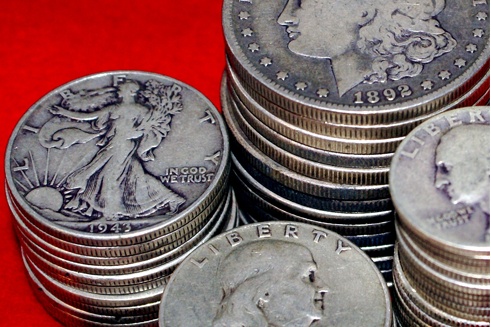
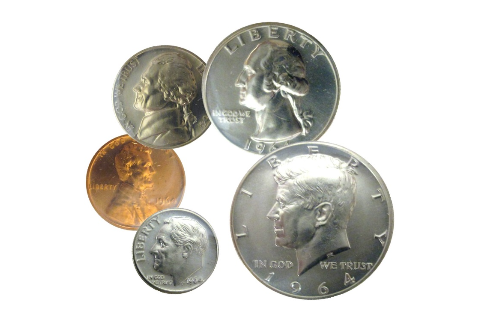
The most common Pre 1964- United States Coinage is silver. So, nickels, dimes, quarters, half-dollars, and dollars from that time period are ninety percent silver and thus worth more than their face values. Other coins pre-dating 1964 that may hold value are Silver Morgan and peace dollars, Kennedy half dollars, Benjamin Franklin half-dollars, silver Mercury dimes, Roosevelt dimes, Barber dimes, silver George Washington Quarters, standing liberty silver quarter war nickels, and more.
We purchase Canadian, Mexican, French, English, Russian, South American, Chinese, Japanese, and many more foreign country coins.
Coin pricing is determined by many factors, but for the sake of simplicity, rarity, metal composition, condition, origin, and age are the main factors. There are also publications such as GreySheet and Blue Sheet, which are guides to coin pricing, as well as coin auctions, and the metal spot markets where coin values may be determined.
While many people come to our Quincy, MA pawn shop because they want to sell their gold or diamond jewelry, here at The Jewelers and Loan Co., we also buy gold coins and other valuable coins from our customers. We pride ourselves on being the Quincy, MA experts when it comes to valuable, rare and vintage coins, which is why we are the best place in the area to turn to when you want to sell gold coins for cash.
We also buy, sell and pawn online now too, so you can instantly get an appraisal and an offer on your gold coins, all from the comfort of your home.
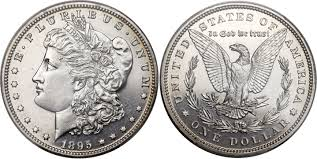
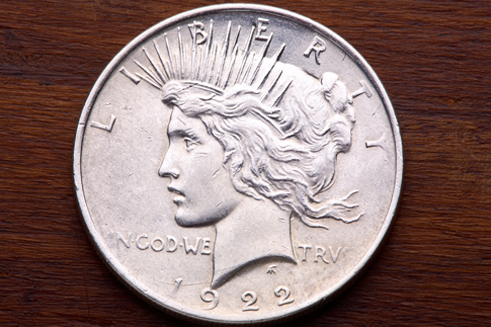
Buying today’s most valuable coins
Here at our Massachusetts pawn shop, we know the value of many of today’s most rare coins. This is why we proudly buy, sell and pawn valuable coins here in the shop. We are also happy to help our customers determine whether or not the old coins they have sitting around their home are valuable and how much they can get from trading in these coins for cash.
Even if you are just looking for an appraisal for your coins, we can help you get the insight you need on your items, with a no-obligation appraisal. When you come into our Quincy, MA pawn shop, we’re able to provide information on the history of your coin, and also some insight on the condition of your coin as well. We adhere to the standard grading conditions of coins, which includes the following conditions. These are all elements of the American Numismatic Association of Grading Standards.
Proof— A specially made coin that is distinguished by sharp details and typically made with a brilliant, mirror-like surface. If you have a proof coin to sell, you will be able to tell by its appearance. The term proof is used to describe the method of manufacture, not its grade. When the term “proof” is used, it is meant to describe a superior condition, unless otherwise noted.
Gem Proof (PF-65)— A specially made coin that is distinguished by sharp details and typically made with a brilliant, mirror-like surface. If you have a proof coin to sell, you will be able to tell by its appearance. The term proof is used to describe the method of manufacture, not its grade. When the term “proof” is used, it is meant to describe a superior condition, unless otherwise noted. Loan Collectors often refer to coins as “gems”, even though these coins may or may not be different from a “proof” coin as described above.
Choice Proof (PF-60)— This is a type of proof coin where the surface is reflective, with only a few blemishes in secondary focal points. You will likely not even notice the blemishes on these coins, because they are not in noticeable areas. There are also no major flaws on choice proof coins.
Proof (PF-60)— A coin, that is “proof” may have several contact marks, hairlines or light rubs on an otherwise mirrored surface. The luster may be dull compared to gem proof or choice proof coins.
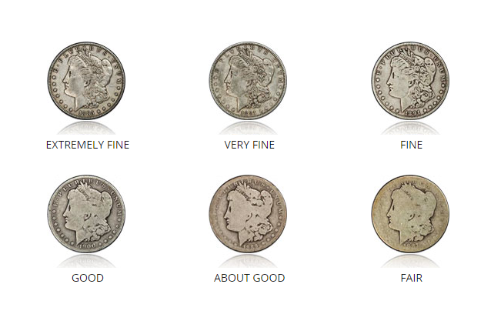
Mint States
The terms “mint state” and “uncirculated” mean the same thing and can be used interchangeably. When a coin is in mint state, it means it shows no trace of wear at all. These coins may vary slightly due to minor imperfections, based on the following subcategories:
Perfect Uncirculated (MS-70)— This type of coin is in perfect new condition, showing no trace of wear. This coin is the finest quality possible, with no evidence of scratches, handling or contact with other coins. These coins are virtually perfect and the finest quality possible. There are very few circulation-issued coins ever found in this condition. If you feel as though you may have one of these gold coins, bring them into our Quincy, MA jewelry store so we can help you determine if this is the type of coin you have.
Gem Uncirculated (MS-65)— This type of coin is an uncirculated coin that is also quite rated. It may be brilliant or lightly toned and will have very few contact marks on the surface or rim.
Choice Uncirculated (MS-63)— A coin with some distracting contact marks or blemishes in prime focal areas. The luster on this coin may be impaired. It is still a high-quality coin.
Uncirculated (MS-60)— This coin has no trace of wear, but it may show a few contact marks from being handled. The surface of this coin may be spotted or lack certain luster. This is a common type of mint state coin we see in our store.
Choice About Uncirculated (AU-55)— This type of coin has at least three-fourths of its original mint luster.
About Uncirculated (AU-50)— These coins may have traces of light wear on many of the highest points of the coin. At least half of the mint luster will still be present.
Choice Extremely Fine (EF-45)— This type of coin may have overall wear on the high points of the coin. All of the design details are still very sharp and some of the mint lusters is still evident. We see many of these coins in our Quincy, MA shop.
Extremely Fine (EF-40)— There is light wear on the design of the coin throughout, but all features on the coin are still sharp and well defined. You may still see traces of luster.
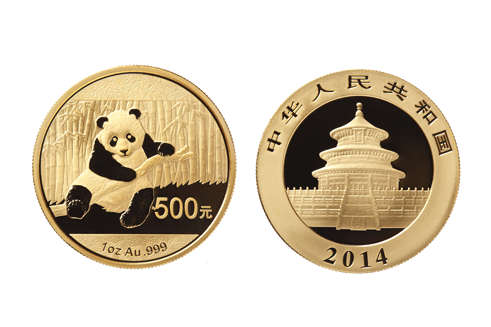
Choice Very Fine (VF-30)— This type of coin has light, even wear on the surface and the highest parts of the design. All the lettering and major features on the coin are sharp. If you have this type of coin, bring it into our shop for an appraisal on your piece.
Very Fine (VF-20)— This type of coin has moderate wear on all of the design high points. All of the major details on this coin are still clear.
Fine (F-12)— Coins that have a fine grading have moderate to considerable even wear. The entire design of the coin is still bold with an overall pleasing appearance to it.
Very Good (VG-8)— This type of coin is well worn with the main features still being clear and bold, although the coin is rather flat.
Good (G-4)— A G4 or “Good” grade coin still is heavily worn and has a design that is visible but faint in certain areas. Most of the details in these coins are still flat.
About Good (AG-3)— An AG-3, or “about good” rated coin is going to be very heavily worn, with portions of the lettering, the date and the legend worn smooth. The date is typically barely readable in these coins.
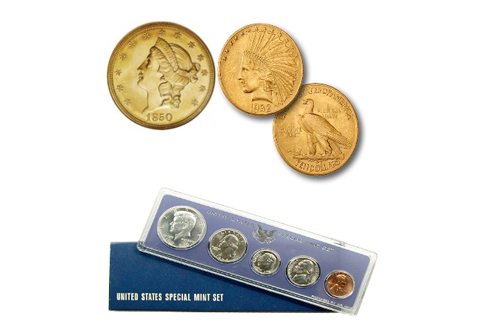
An important note
Grading Loan Conditions are much different than grading gold or silver jewelry. When it comes to selling your gold coins for cash, it is important to note that undamaged coins are worth far more than bent, corroded, scratched, holed, nickeled, stained or mutilated coins. Flawless or uncirculated coins are very valuable, but also very rare. In most situations “flawless looking” coins are actually slightly worn coins, known as “sliders.” We see far more “sliders” in our Quincy, MA store, than flawless coins. These are coins that have been cleaned and buffed to look like uncirculated coins and will have less of a value than perfect pieces.
If you have a gold coin or other valuable coins you would like to sell, you will find we buy a number of different coins right here in our office. Below is a brief overview of some of today’s most valuable collectible coins, and history on what makes these coins so unique. If you believe you have one of these coins in your possession, bring it down to our Quincy, MA pawn shop for your free appraisal.
You can also take a look at some of the current rates of today’s most valuable coins to get a better idea of what some of these items are worth.
Pre-Federal Issue and Colonial Issues
Pre-Federal Issue Coins are some of the oldest coins we see in our Quincy, MA store. These coins appeared in the United States before 1793. Many of these foreign coins came from England, Spain, Portugal, France, and the Netherlands. These coins were considered legal tender in America until 1857. Pre-Federal Issue Coins include the following.
British New World Issues:
- Sommer Island (Bermuda) – These coins were first issued in 1616 and are known as Hogge Money or Hoggies.
- Massachusetts – There are a few types of coins in this category. The “New England” coins were first issued in 1652. They were the earliest authorized medium of exchange in the New England settlement and were known as wampum. There were also Willow Tree Coinage, Oak Tree Coinage, and Pine Tree Coinage in this category of Pre-Federal coins.
- Maryland (Lord Baltimore Coinage) – This very rare coin was first issued in 1659 and by 1700 had largely disappeared from commerce.
- New Jersey St. Patrick or Mark Newby Coinage – This coinage came from Dublin, Ireland in 1663 and was also known as St. Patrick Coppers.
Colonial and Post Colonial Issues
These coins are also quite rare and quite old, but if you think you may have coins from this era, please bring them into our Quincy, MA store. Post-Colonial coins are those from 1783-1792.
Federal Issues
These stamps are less common, as they are typically only used on European jewelry items such as Claddagh rings, Celtic Crosses, and even old pocket watches. Gold jewelry with a 375 stamp on it is likely 9K gold and tends to be very dark in color.
Federal Issues – Federal issued coins can include the following coins. If you want to see if you have valuable federal issue coins like the ones listed below, bring them into our shop for more information and a free appraisal.
Continental Currency – Pieces that were likely made to serve in lieu of a paper dollar. Their exact monetary role is still unknown today.
Half Cents – These coins may not have had a high monetary value at the time, but they can be quite valuable today. These coins were issued between 1793 and 1857.
Large Cents – Large cent coins were issued between 1793 to 1857.
Small Cents – These coins first appeared in 1856 and may be valuable if you have an authentic one in your possession.
Two-Cent Pieces – If you have a two-cent coin on your hands, it was manufactured between 1864 and 1873 and may be of value.
Three-Cent Pieces – These vintage coins may be quite valuable and were issued between 1851 and 1889.
Nickel Five-Cent Pieces – Nickels can date back as far as 1866.
Half Dimes – These coins are different than Nickel Five-Cent Pieces and may be quite valuable. They were issued between 1794 to 1873.
Dimes – Certain dimes can date back to 1796.
Twenty-Cent Pieces – These vintage coins can be quite valuable. They may be issued between 1875 to 1878, and they are very rare since they were only manufactured for three short years.
Quarter Dollars – Quarters can date back as far as 1796.
Half Dollars – Depending on the condition and the date of the half dollar in your possession, they may be worth more than their technical monetary value. Half dollars can date back to 1794.
Silver and Related Dollars – These coins can date back to 1794.
Gold Dollars – Real, valuable gold dollars were manufactured between 1849 and 1889.
Quarter Eagles – Real Quarter Eagle coins can be quite valuable. They were circulated between 1796-1929.
Three-Dollar Gold Pieces – These gold coins were circulated between 1854 and 1889. They are rare and can be valuable in the right condition.
Four-Dollar Gold Pieces – If you want to sell one of these gold coins for cash, these four-dollar gold pieces may be valuable. Authentic four-dollar gold pieces were created between 1879 and 1880 and are very rare.
Half Eagles – A Half-Eagle coin was circulated between 1795 to 1933.
Eagles – Eagles were circulated between 1795 to 1933.
Double Eagles – Double Eagle coins were circulated between 1849 and 1933. Bring these gold coins into our store for more information on the value of your Double Eagle Coins.
Commemorative – These coins were first manufactured in 1892 to date.
Proof and Mint Sets – These coins were first manufactured in 1936 and the terms proof and mint are used to describe the condition or rating of this coin.
Bullion
The following coins are classified as bullion coins.
- Silver bullion coins (1986 to present)
- Gold bullion coins (1986 to present)
- Platinum (1997 to present)
If you want to know if your coin is a bullion coin, bring it into our Quincy, MA location for more information.
United States Pattern Pieces
There are certain significant U.S. pattern pieces that have significance. If you have questions about what these coins look like or want to sell coins for cash, bring them into our Quincy, MA pawn shop for an appraisal. Significant U.S. pattern pieces include the following:
- 1863 Two-Cent Pieces
- 1836 Gold Dollar
- 1854 Cent
- 1856 Half Cent
- 1866 Lincoln Five-Cent Piece
- 1868 Cent
- 1872 Amazonian Quarter
- 1872 Amazonian Gold $3
- 1874 Bickford Eagle
- 1877 Half Union
- 1879 Quarter Dollar
- 1879 Dollar
- 1907 Indian Head Double Eagle
- 1916 Liberty Walking Half Dollar
- 1942 Experimental Cent
Want to learn more about these special-pattern US coins? Visit the coin experts at Jewelers and Loan Co. for more information today.
Other Special Issue Coins
If you want to sell gold coins for cash at our Quincy, MA store, then you may want to know about some of these special issue coins. The term “private gold” is used to reference coins struck outside the United States Mint. The words “territorial” or “state” may also be used. These are some of the private and territorial gold pieces you may wish to sell at our Quincy, MA pawn shop.
Templeton Reid– There are two types of coins in this category. The Georgia Gold 1830 and California 1849. These coins date back to the 19th century and were struck by jeweler and gunsmith, Templeton Reid.
The Bechtlers– These coins were circulated between 1831 and 1852 from skilled German metallurgist Christopher Bechtler. There are Carolina and Georgia issued coins as well as August Bechtler coins.
Norris, Gregg, and Norris– These gold coins are from San Francisco in 1849.
Moffat and Co.San Francisco– 1849-1853 gold coins.
Coins from the United States Assay Office– These coins date back to 1851.
Miners’ Bank Coins– These coins are from San Francisco in 1849.
Kellogg and Co. – San Francisco coins from 1854-1855. These are very rare, but if you have and want to sell these gold coins, please bring them into our Quincy, MA pawn shop.
Oregon Exchange Company– These gold coins from Oregon City date back to 1849 and have a unique history dating back to the discovery of gold in California.
Colorado Cold Pieces– These gold coins were made in Denver from 1860-1861.
California Small Denomination Gold– Starting in 1852, these small coins were part of the California gold rush. They include the octagonal quarter dollar, the round quarter dollar, the octagonal half dollar, the round half dollar, the octagonal dollar, and the round dollar.
Coins of the Golden West– These are small souvenir California pieces made in the early 20th century.
California Gold Ingot Bars– Looking to get cash for gold bars? If you have them, bring them into our Quincy, MA pawn shop for an appraisal.
Hard Times Tokens– These tokens and coins were privately minted from 1832 to 1844.
Civil War Tokens– If you have vintage tokens from the 1860s, bring them into our Quincy, MA jewelry store for more information about the authenticity of your coin.
How to Sell Gold Coins at Our Quincy, MA Store
If you have one or a few of these coins in your possession or feel as though you have valuable coins to sell, bring them into our Quincy, MA office for more information. We can do an appraisal right here in our office, or you can fill out an online appraisal application and send your coin in through the mail.
We will provide you with a no-obligation offer on what we can pawn your coins for or what the coins are worth in cash. We guarantee that there is no better place to turn to when you want to sell gold coins for cash. Come visit us at our Quincy, MA jewelry store today so we can help you get the cash you deserve for your unwanted gold coins.
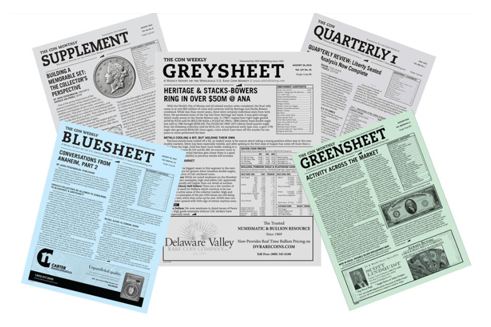
How are coin prices determined?
Coin prices are based on many factors. The year, the circulation, metal content, the rarity, type of coin, and whether they are considered circulated, uncirculated, proof, mint set, proof mint set, or commemorative are just some of the many considerations. Prices are generally determined by the metal content, grey sheet pricing, blue sheet pricing, and the underlying demand based on collector and consumer trends in the coin market place.
My coin is in excellent condition, how much can I get for it?
Coins have seventy or more different possible grades. PCGS & NGC are reputable coin grading companies one could turn to for accurate grades of condition and authenticity.
.
I cleaned my gold and silver coin(s), now the coin is in perfect condition!
We advise that you do NOT clean your gold, platinum, or silver coins. This can actually decrease the value of your coin! Bring it to someone who is knowledgeable in the area of coins to so that you can get a true appraisal.
Half Cents
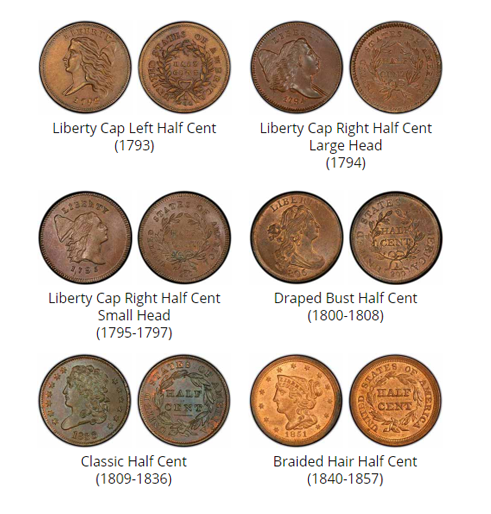
Cents
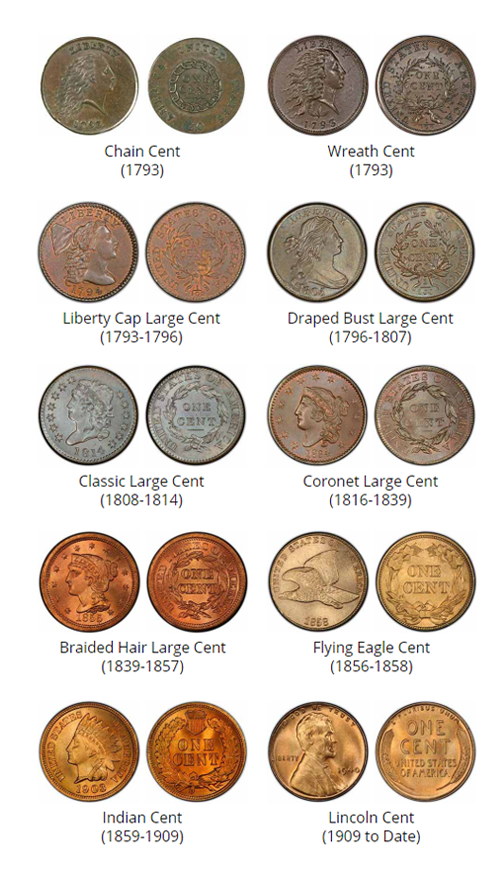
Two Cents, Three Cents & Half Dimes
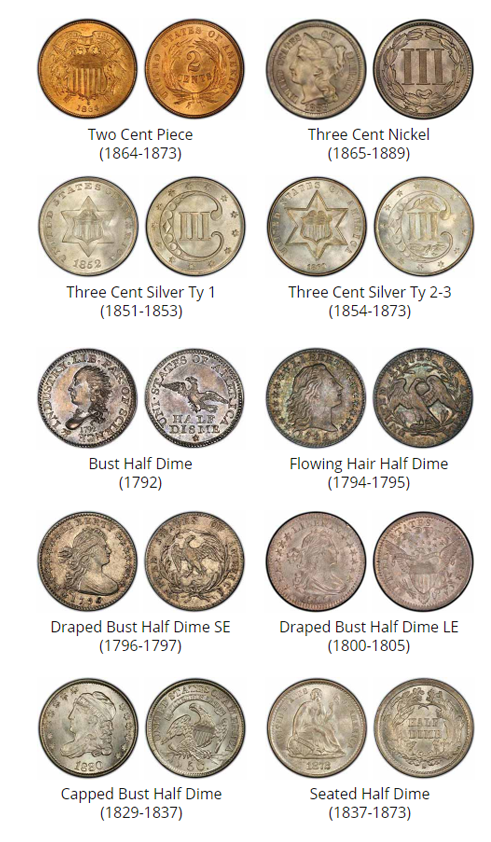
Nickels
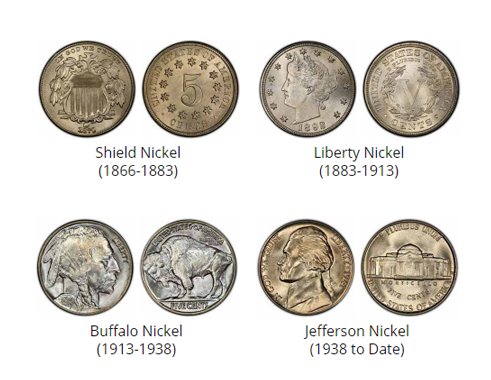
Dimes
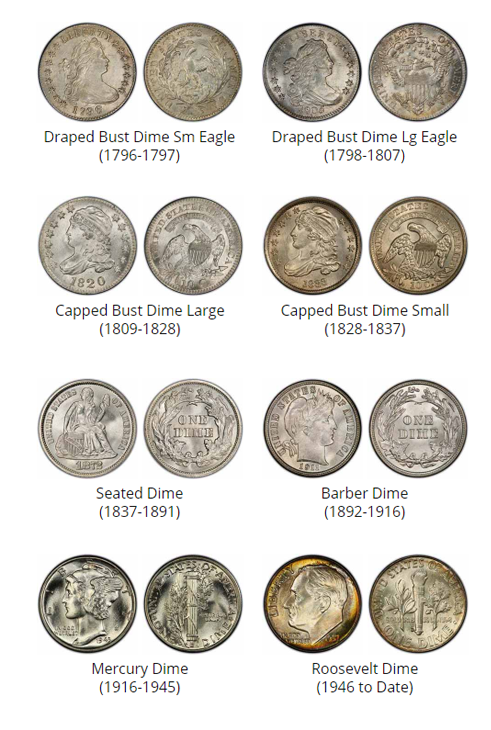
Quarters
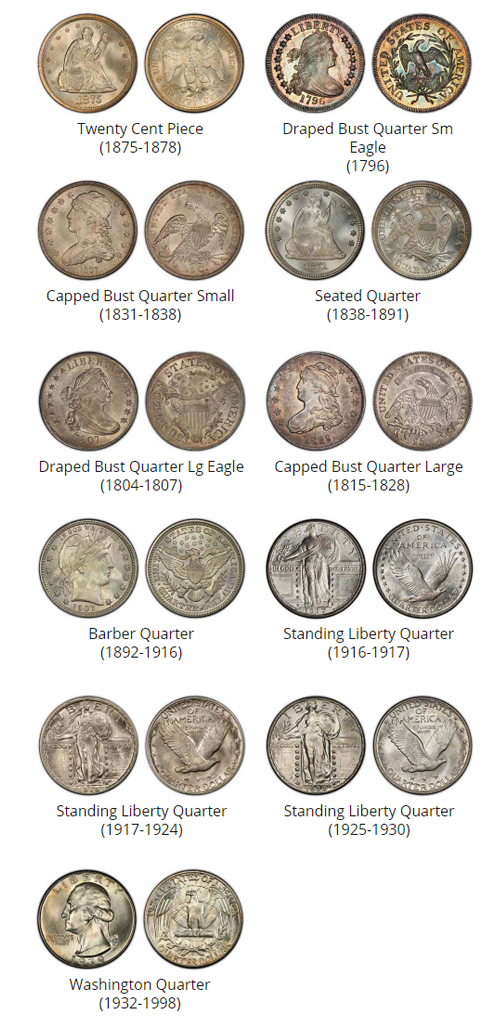
Half Dollars
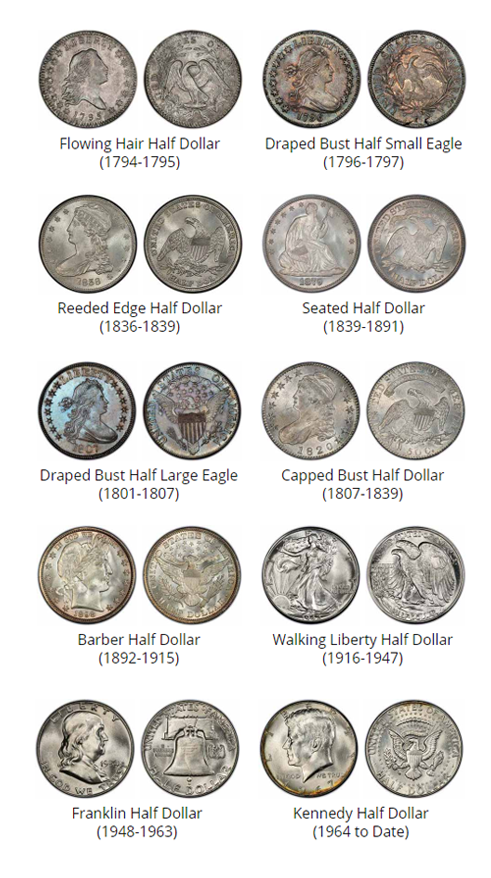
Dollars
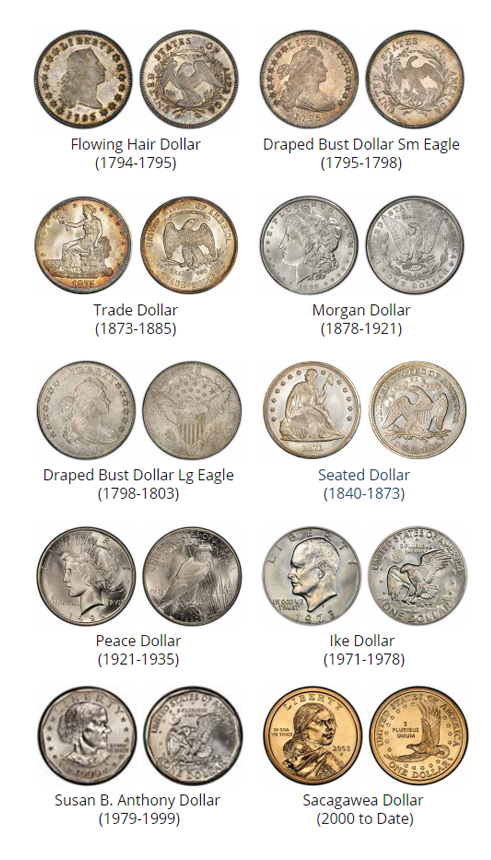
$1-$3 Gold Coins
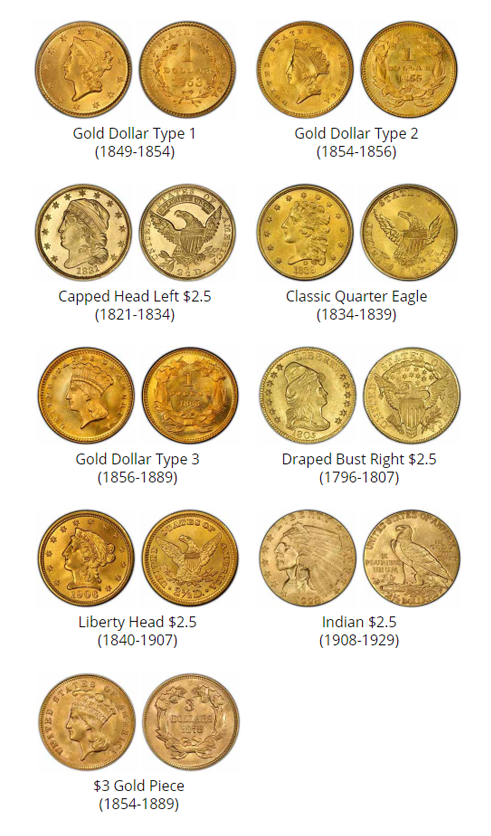
$5-$10 Gold Coins
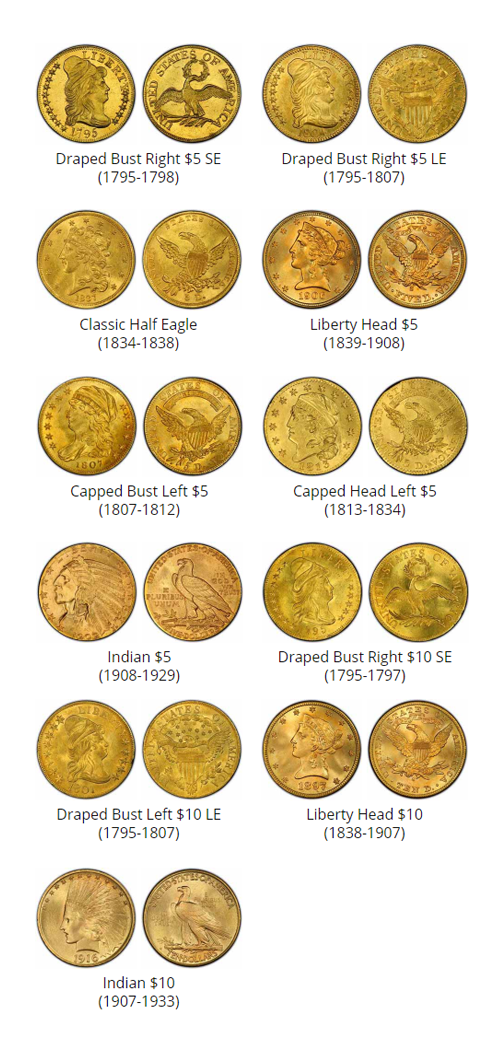
$20 Gold and Bullion
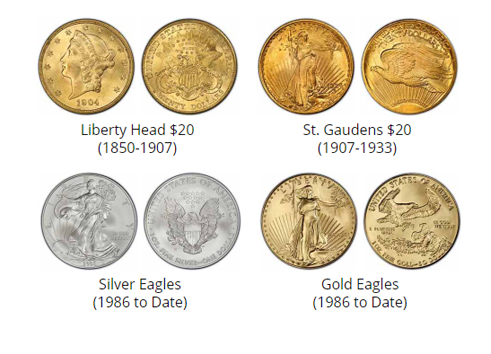
Please Fill Out the Form for an Immediate Response!
"*" indicates required fields
